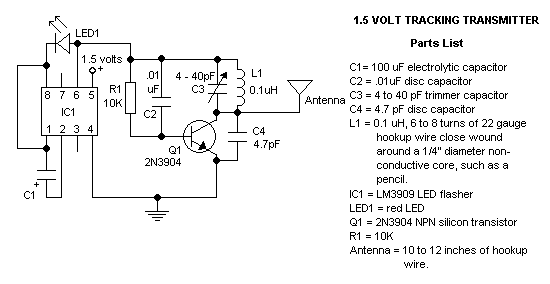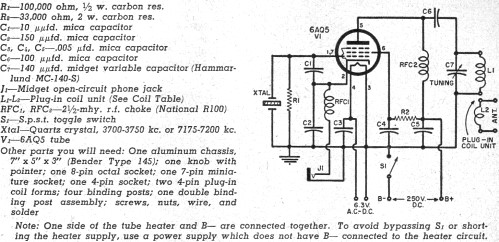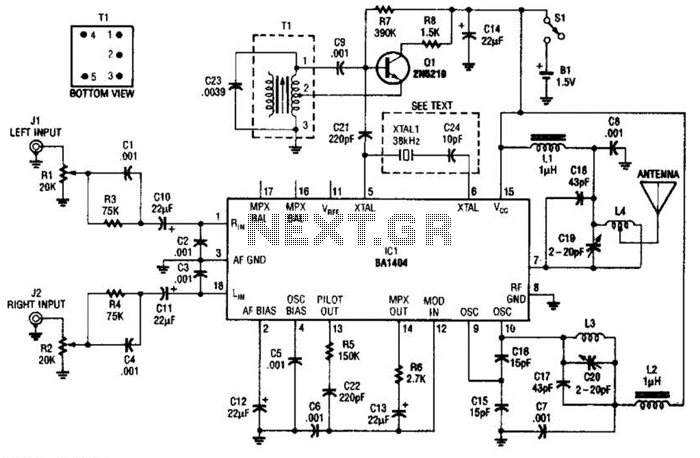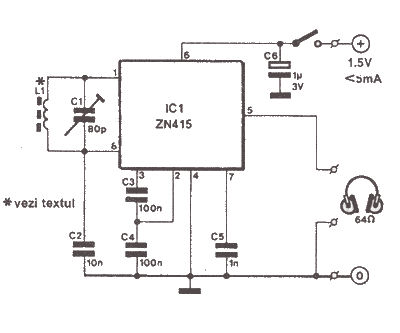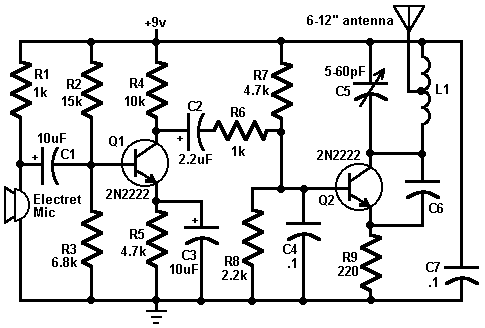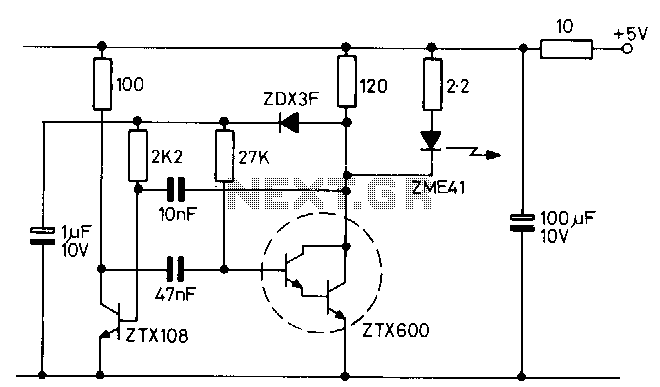
Coilless FM Transmitter
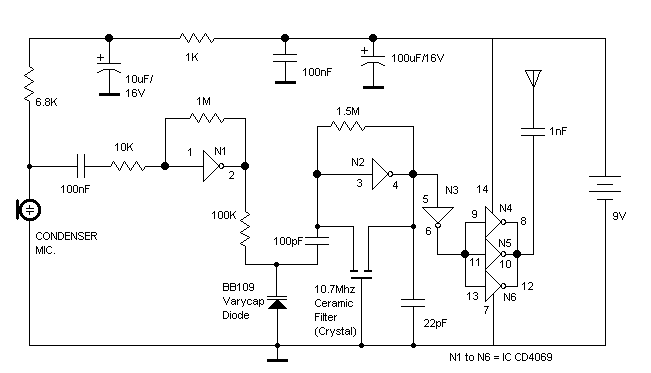
The RF oscillator employs inverter N2 and a 10.7 MHz ceramic filter to drive the parallel configuration of inverters N4 to N6 via N3. Due to the parallel arrangement of these inverters, the output impedance is low, allowing for direct connection to a 1/4 wavelength aerial. The output from inverters N4 to N6 produces a square wave, resulting in the presence of numerous harmonics, including the 9th harmonic.
The RF oscillator circuit is designed to generate a stable radio frequency signal at 10.7 MHz, which is commonly utilized in various communication applications. The core component, inverter N2, functions as the oscillator, producing a square wave output. This output is then filtered by the 10.7 MHz ceramic filter to eliminate unwanted frequencies and harmonics, ensuring a cleaner signal.
Inverters N4 to N6 are configured in parallel, which serves to decrease the overall output impedance of the circuit. This low impedance is crucial for effectively driving a 1/4 wavelength aerial, which is typically used for efficient radiation of the RF signal. The choice of a 1/4 wavelength aerial is advantageous as it allows for optimal performance in terms of radiation efficiency and bandwidth.
The square wave output from the inverters N4 to N6 inherently contains multiple harmonics. While the fundamental frequency is at 10.7 MHz, the square wave nature of the signal results in the generation of odd harmonics, including the 9th harmonic. These harmonics can be both beneficial and detrimental, depending on the application. In some cases, they may be utilized for frequency multiplication or other signal processing tasks, while in other situations, they may need to be filtered out to avoid interference with adjacent frequency channels.
Overall, this RF oscillator circuit design demonstrates effective use of inverters and filtering techniques to achieve a desired frequency output, with considerations for impedance matching and harmonic content management, making it suitable for various RF applications.The RF oscillator using the inverter N2 and 10.7Mhz ceramic filter is driving the parallel combination of N4 to N6 through N3.Since these inverters are in parallel the output impedance will be low so that it can directly drive an aerial of 1/4th wavelength. Since the output of N4-N6 is square wave there will be a lot of harmonics in it. The 9th harmonics o.. 🔗 External reference
The RF oscillator circuit is designed to generate a stable radio frequency signal at 10.7 MHz, which is commonly utilized in various communication applications. The core component, inverter N2, functions as the oscillator, producing a square wave output. This output is then filtered by the 10.7 MHz ceramic filter to eliminate unwanted frequencies and harmonics, ensuring a cleaner signal.
Inverters N4 to N6 are configured in parallel, which serves to decrease the overall output impedance of the circuit. This low impedance is crucial for effectively driving a 1/4 wavelength aerial, which is typically used for efficient radiation of the RF signal. The choice of a 1/4 wavelength aerial is advantageous as it allows for optimal performance in terms of radiation efficiency and bandwidth.
The square wave output from the inverters N4 to N6 inherently contains multiple harmonics. While the fundamental frequency is at 10.7 MHz, the square wave nature of the signal results in the generation of odd harmonics, including the 9th harmonic. These harmonics can be both beneficial and detrimental, depending on the application. In some cases, they may be utilized for frequency multiplication or other signal processing tasks, while in other situations, they may need to be filtered out to avoid interference with adjacent frequency channels.
Overall, this RF oscillator circuit design demonstrates effective use of inverters and filtering techniques to achieve a desired frequency output, with considerations for impedance matching and harmonic content management, making it suitable for various RF applications.The RF oscillator using the inverter N2 and 10.7Mhz ceramic filter is driving the parallel combination of N4 to N6 through N3.Since these inverters are in parallel the output impedance will be low so that it can directly drive an aerial of 1/4th wavelength. Since the output of N4-N6 is square wave there will be a lot of harmonics in it. The 9th harmonics o.. 🔗 External reference
